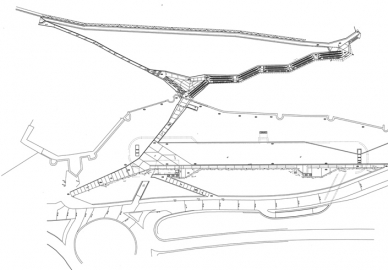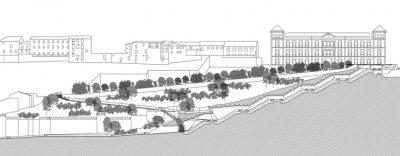La Granja Escalator
The historical centres of many cities face the problem of compatibility between vehicular and pedestrian circulation.
In Toledo, the first great steps taken to solve the difficulties of accessibility to the old part of the city has been the construction of a large parking garage for 400 cars in the Paseo de Recaredo and a continuous mechanical escalator that transfers the pedestrians to the high part of the city. The mechanical stairways begin their ascent after crossing a short passage placed under the foundations of the medieval wall. This passage is a new gate to the city, alternative to those of the Bisagra and the Cambrón.
The realisation of the project presented considerable difficulties and therefore it was necessary to work with the maximum care and wisdom. The hillside of the Rodadero, on which the stairways are situated, is formed by the centuries-long accumulation of brashes. The new foundations had to be descended 30 metres until reaching the firm rock. The medieval ramparts have been respected in their entirety by having the staircase enter at a level below their foundations and in order to diminish the visual and environmental impact, the voluminous construction that harbours the stairways has been incrusted in the hillside. The whole work has been built using a ochre concrete, in the tone of the typical architecture of Toledo.
To compensate for the 36 metres difference, the six tracts of stairways form a zigzag figure that allows them to adapt to the topography and prevents the sensation of vertigo that may be caused by a single tract staircase.
The mechanical stairways lean on a concrete foundation and they are limited in one of their faces by a retaining wall, folded over to shelter passengers and to give continuity to the landscaped slope of the hillside. This roof does not follow exactly the natural inclination of the land, it is raised up slightly to make appear a long and continuous opening that accompanies the ride of the stairways, from which the Vega of the Tajo and the new Toledo can be seen. This opening, observed from a distance, becomes the most characteristic element of this work: a breach, a fissure of light, a light wound healed on the façade of the city.

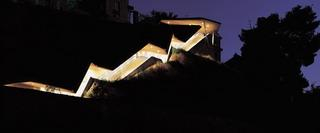 © David Cardelus
© David Cardelus
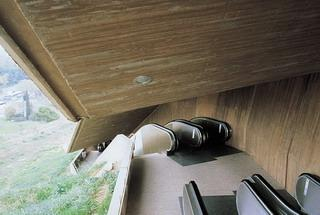 © David Cardelus
© David Cardelus
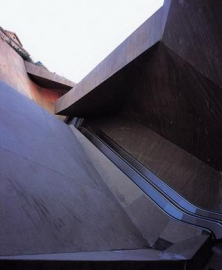 © David Cardelus
© David Cardelus
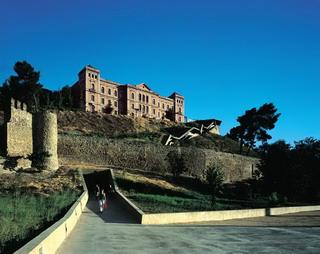 © David Cardelus
© David Cardelus
